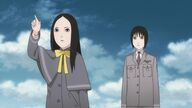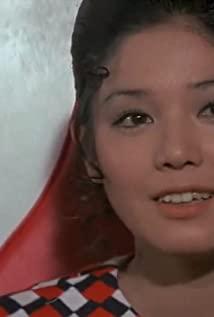The two-hour film, including the ending song, was not watched in a single fast-forward. Because I was tired, I had the patience to watch it. I wanted to take a habit of staring at the screen as a rest and clear my brain. Mamoru Oshii's camera is as calm as always, almost still, which can hardly be called restraint in the use of camera, but a kind of self-control and self-suppression that is almost ruthless. Even the air battle scene is like this. A large number of fixed camera positions, still shots, indifferent perspectives, and the gorgeous explosion of the huge fighter planes can't evoke the slightest emotional fluctuations in this shot. The same is true for the characters, the action is so realistic that the application of animation rules cannot be found at all. Yet its essence as an animation is also in this seemingly unwavering stillness. In imperceptibly small magnitudes, those objects are still moving, and in this movement we actually feel the passage of time. Perhaps the slow and small movement is the best manifestation of the daily passage of time.
It is precisely because of such calmness and stagnation that the last battle between Hannan and the godfather was entrusted to be so beautiful and tragic. The curve drawn by the entanglement of the two fighter planes is so charming that it seems that not only the narrator himself, but also the camera lens is infected by Hannan's actions. They are the only time in the film that they closely follow the protagonist's fighter planes emotionally, from all directions in the west. It is portrayed dramatically from every angle, until the protagonist machine is tragically beaten to a sieve. At this time, the camera suddenly returned to its original cruelty. It recorded every bullet hole shot and the blood spattered from the cockpit, like a gangster accurately and professionally counting the number of knives of a slasher.
The aircraft combat part of the film may not be the most exciting and dazzling, but it is the most realistic. Because of the reality, there is less frivolity and gorgeousness like stunt performances, and more heavy greatness. When the planes are slowly moving and taking off on the runway, I think no director can use CG to express these rusted steel bodies more poetically.
How should we face our lives? Is it a sadness to repeat day after day? I think Oshii's answer is yes. However, it is impossible to imagine how many possibilities to break this cycle and how much courage it will take in the end. In the film, Han Nan even paid the price of his life for this.
This is a boring film, not only because it restores the experience of time too faithfully, but also because all the suspense and foreshadowing are too indifferent, too unexpected, coupled with the slow rhythm, people have not sorted out these trivial thoughts. The details are confused and forgotten. But if you rewatch it a second or third time, you will tremble at the sympathy beneath the rigor and length of the ramblings of the whole story. It is precisely because the camera has no emotional intervention that events are shown clearly and lucidly. It is precisely because the characters do not deliberately perform that their true feelings can be revealed, and what finally erupts is their real determination and sadness.
When I saw the set of scenes in which Hannan recalled the memory of his previous life, he suddenly thought of the metaphor about the memory of reincarnation in "Xiao Temple": at a certain point, the alaya consciousness will flood like a flood rising in the fields, and the river will be flooded. It is submerged together with the well water, breaking down the dikes of this time and then, and the memories of past and present lives are floating in it.
Maybe life sometimes needs such a flood to drown my present life, so as to open the dream in my heart. If you have a plan, do it. If you have a wish, just do it. We have to be brave anyway, don't we?
View more about The Sky Crawlers reviews











